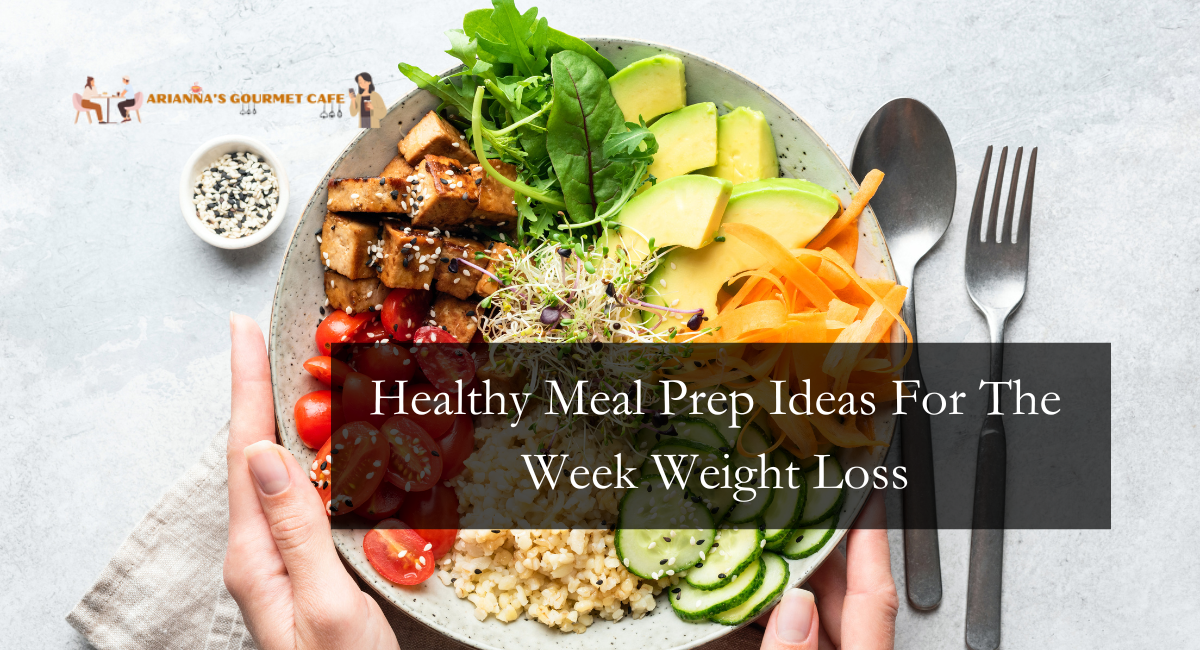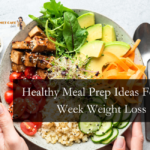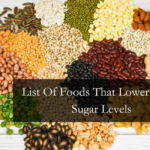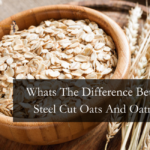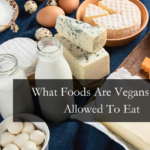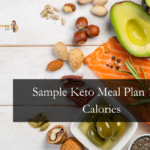Meal preparation is an effective aid for weight loss, which typically begins in the kitchen. These balanced meal prep suggestions for the week will help you achieve your objectives. By planning and preparing nutritious meals in advance, you can take charge of your diet and make strides towards a healthier lifestyle. This article, will discuss healthy meal prep ideas for the week weight loss.
What Does Meal Prep Mean?
Meal prep, an abbreviation for meal preparation, refers to planning and preparing meals in advance. You can prepare meals one day in advance, or spend one day preparing lunches and/or dinners for the entire week.
While most people only prepare one or two meals, you can easily prepare breakfast, lunch, dinner, and snacking for the upcoming week. It is solely your decision!
How to Make A Meal Plan
Include breakfast, lunch, snacks, and supper on your meals for the following few days. Start with tried-and-true recipes and dishes you can prepare in your sleep. If you want to be as efficient and quick as possible, there is no need to attempt to learn how to cook.
Include a list of all the ingredients you’ll need and the quantity of each.
Time to go shopping for groceries!
Set aside one or two days to complete your meal prep; try to keep each culinary session to one hour or less, so you don’t dread the days you’re cooking your meal prep recipes.
Healthy Meal Prep Ideas For The Week Weight Loss
Breakfast
Overnight Oats
- In a mason jar or other hermetic container, mix 1/2 cup rolled oats, 1 cup unsweetened almond milk (or your favourite milk), 1 tablespoon chia seeds, and honey or maple syrup to taste.
- Add diced strawberries, blueberries, or bananas to the dish.
- Mix ingredients thoroughly, then refrigerate overnight.
- Give it a thorough stir in the morning and enjoy your nutritious and creamy breakfast.
Greek Yogurt Dessert
- Start with a protein-rich foundation of Greek yogurt.
- Layer it with crunchy granola and fresh berries or fruit slices.
- For added flavor, drizzle honey or sprinkle cinnamon on top.
Egg Muffins
- Prepare the oven to 350 degrees Fahrenheit (175 degrees Celsius).
- In a basin, beat 6 to 8 eggs with salt, pepper, and your preferred herbs (such as parsley or chives).
- Cut vegetables such as bell peppers, spinach, and mushrooms into cubes.
- Spread the vegetables evenly in a muffin tin that has been greased, then pour the whisked eggs over them.
- Bake for Fifteen to twenty minutes, or until the muffins are firm.
- Once they have chilled, refrigerate them and reheat them in the microwave for a speedy breakfast.
Lunch
Grilled Chicken Salad
- Olive oil, lemon juice, garlic, and your favorite spices should marinate chicken breasts.
- Grill the chicken until it is thoroughly roasted.
- Chopped grilled chicken is combined with mixed greens, cherry tomatoes, cucumber slices, and a vinaigrette dressing prepared from olive oil, vinegar, mustard, and honey.
Quinoa Bowl
- Follow the directions on the package to cook quinoa.
- You can cook bell peppers, zucchini, and red onion with olive oil and the spices you like.
- The quinoa is topped with roasted vegetables, lentils are added for protein, and a tahini dressing is drizzled on top.
Wrap Or Whole Grain Sandwich
- Use whole grain tortillas and bread.
- Layer with lean proteins such as turkey or chicken grilled on the barbeque.
- Add an abundance of vegetables such as lettuce, tomato, cucumber, and bell peppers.
- Spread a nutritious condiment such as humus or avocado.
- Roll and firmly wrap the wrap or sandwich for storage.
Dinner
Baked Salmon With Vegetables
- Season salmon fillets with salt, pepper, and the herb of your choosing (dill or thyme, for example).
- Arrange the salmon and a mixture of diced vegetables on a baking sheet.
- Sprinkle with olive oil and bake at 400°F (or 200 degrees Celsius) for fifteen to twenty minutes until salmon flakes easily with a fork.
Stir-Fry
- Cut the protein of your choosing (chicken, tofu, or shrimp) into bite-sized chunks.
- Protein and vegetables (broccoli, bell peppers, snap peas) should be stir-fried in a heated pan with oil.
- Add low-sodium stir-fry sauce and simmer until all ingredients are tender and coated with sauce.
- Serve over brown rice or cauliflower rice.
Vegetarian Chili
- In a large saucepan, sauté onions, garlic, and chiles in olive oil.
- Add diced canned tomatoes, kidney beans, black beans, chile powder, cumin, and paprika.
- Allow to simmer for at least thirty minutes.
- Portion the chili into containers so that it can be re-heated as necessary.
Snacks
Pre-Cut Veggies With Hummus
- Carrots, cucumbers, and bell peppers should be washed, peeled, and cut.
- Include a small container of tahini for dipping in the portioned containers.
Mixed Nuts
- Purchase in abundance a variety of unsalted nuts.
- For simple portion control, portion single-serving portions (approximately a handful) into snack-sized sacks or containers.
Greek Yogurt With Berries
- Purchase Greek yogurt in individual containers or portion larger containers into single servings.
- Keep frozen berries in the freezer, and when you’re ready to consume, simply sprinkle a handful of berries over your yogurt.
Benefits
Meal preparation has several benefits, particularly for those who are focused on weight loss and sustaining a healthy lifestyle:
- Portion Control: Meal preparation allows you to control portion proportions, allowing you to avoid overeating and better manage your caloric intake.
- Healthier Choices: Home cooking allows for the selection of wholesome, nutrient-dense ingredients, reducing the consumption of processed and toxic foods.
- Saves Time: Planning and cooking meals in advance saves time during the week, making avoiding unhealthy fast food and takeout simpler.
- Consistency: Regular meal preparation promotes dietary consistency, thereby facilitating long-term weight loss or fitness program adherence.
- Financial Savings: Eating out or ordering in can be costly. Meal preparation is typically more cost-effective because ingredients can be purchased abundance and food waste is reduced.
- Improved Nutrition: You can customize your meals to meet specific nutritional objectives, such as increasing protein or reducing carbohydrate intake, ensuring a balanced diet.
- Balanced Diet: Meal planning allows you to create a balanced combination of proteins, carbohydrates, and healthy fats, so enhancing your overall nutrition.
- Better Food Choices: By carefully selecting ingredients, you can avoid the added sugars, excess sodium, and unhealthy fats in restaurant meals.
- Reduced Stress: Having ready-to-eat meals reduces the stress of daily cooking, making it simpler to adhere to a weight loss plan and maintain a healthy relationship with food.
- Supports Physical Activity: Properly fueling your body with prepped meals can enhance your energy levels, making it simpler to engage in regular exercise.
- Customization: Meal prepping enables you to cater to dietary restrictions, food allergies, or specific weight loss programs, ensuring you consume the appropriate foods.
- Long-Term Success: Developing the discipline of meal prepping fosters sustainable eating patterns, contributing to long-term weight loss and improvements in overall health.
Thanks for reading.
